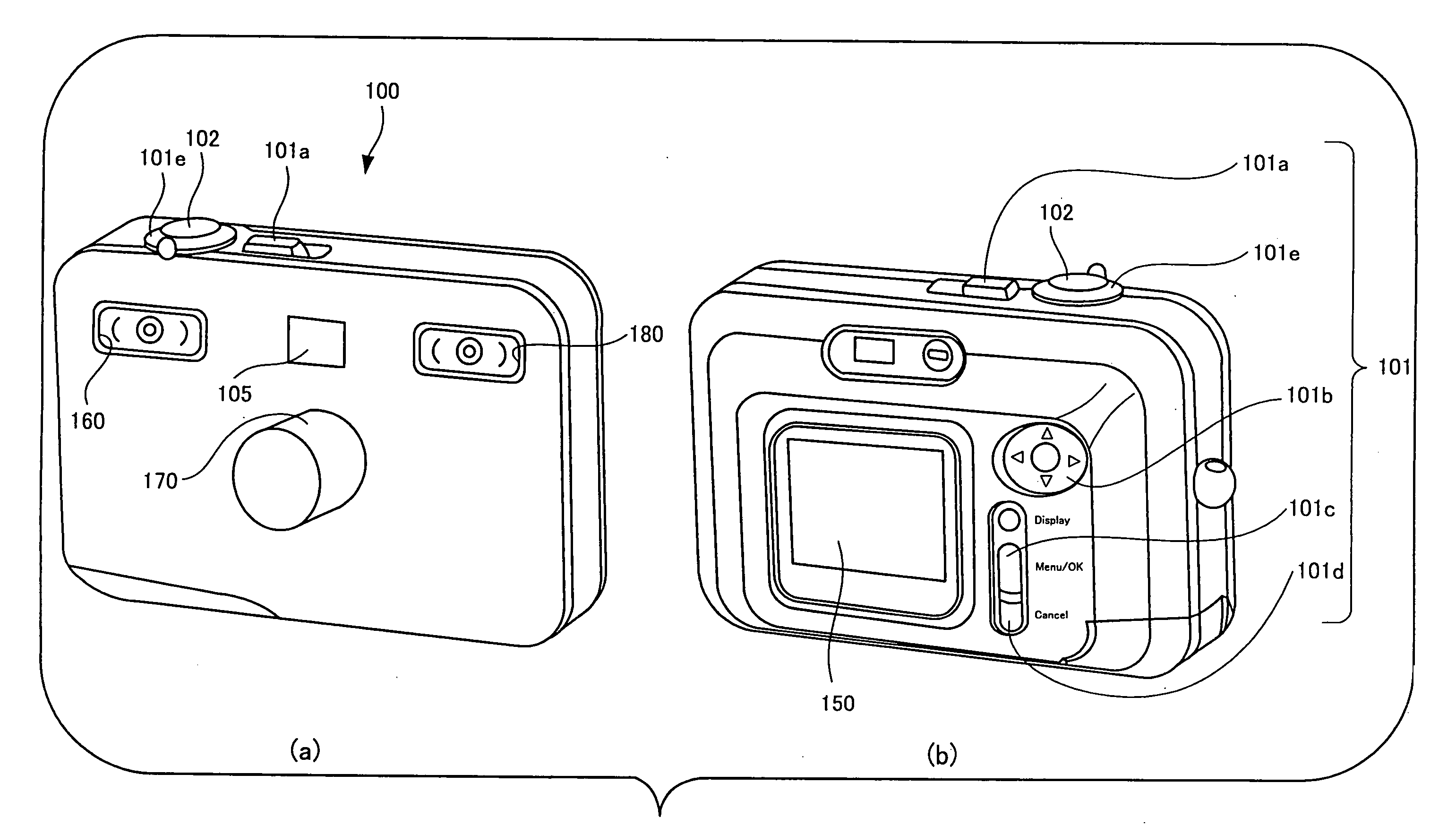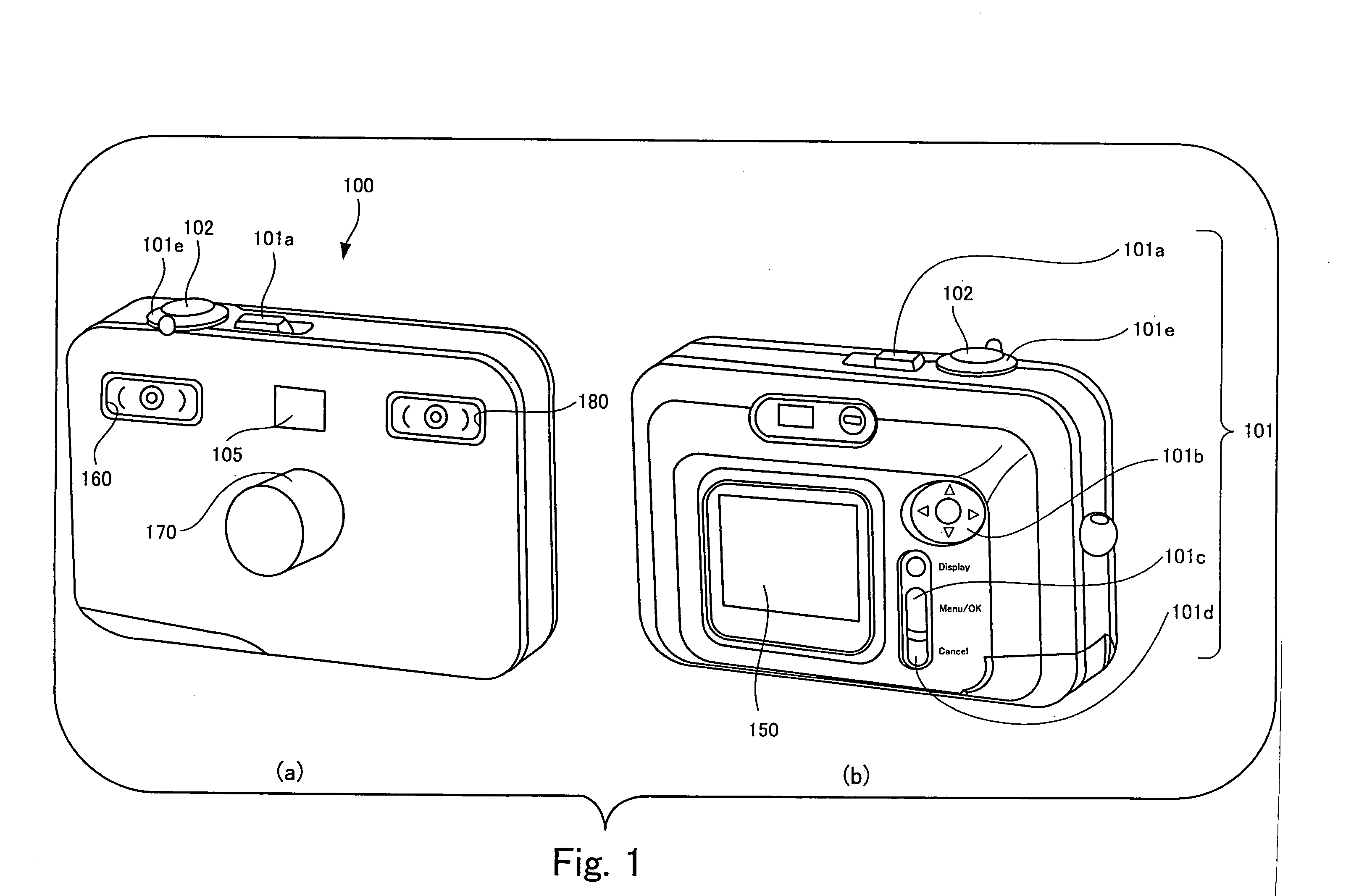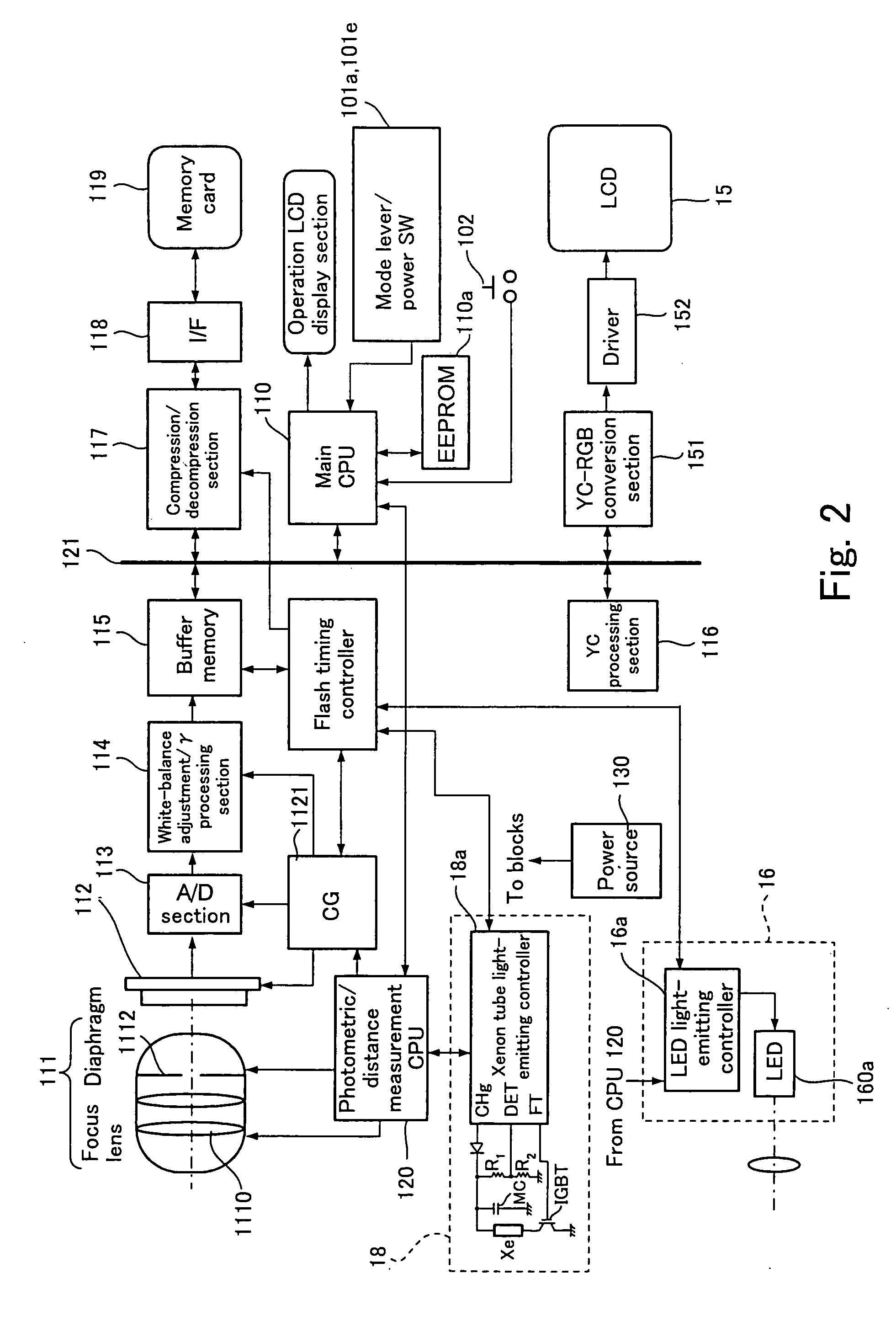Image-taking apparatus
a technology of image-taking apparatus and led light, which is applied in the direction of exposure control, optical radiation measurement, instruments, etc., can solve the problems of inability to reach the subject the light emission power of leds is extremely small, and the auxiliary light for image-taking cannot reach the subject located far away from the camera
- Summary
- Abstract
- Description
- Claims
- Application Information
AI Technical Summary
Benefits of technology
Problems solved by technology
Method used
Image
Examples
first embodiment
[0070]FIG. 1 shows a digital camera according to the image-taking apparatus of the present invention.
[0071]FIG. 1 is a perspective view of the digital camera according to the first embodiment of the present invention. Parts (a) and (b) of FIG. 1 show the front and the back of the digital camera as viewed from above, respectively.
[0072] As shown in Part (a) of FIG. 1, a digital camera 100 of the present embodiment has a lens barrel 170. The digital camera 100 is so configured as to guide a subject image through an image-taking lens incorporated in the lens barrel 170 and to form the image on a CCD solid-state imaging device disposed inside the digital camera 100. Also, the digital camera 100 is so configured as to generate image signals representing a through image and a taken image by means of the CCD solid-state imaging device which will be described later and to detect a distance to subject and subject brightness by performing TTL distance measurement and TTL metering based on th...
second embodiment
[0103] In view of such circumstances, the digital camera has been so modified as to emit auxiliary light for image taking from the second light-emitting section (LED) 16 only when a distance to subject measured by the photometric / distance measurement CPU 120 is shorter than a predetermined distance and when recharge of the main capacitor MC is not completed.
[0104] Description will be continued with reference to the flowchart shown in FIG. 5.
[0105] At step S3041, it is determined whether or not a distance allows image taking with the second light-emitting section (LED). When image taking requires auxiliary light, light is emitted from either the second light-emitting section or the first second light-emitting section depending on whether a distance to subject is short or long which is determined in comparison with a predetermined distance at step S3041.
[0106] More specifically, if it is determined that the distance is shorter than a predetermined distance (Yes) at step S3041, the ...
third embodiment
[0109]FIG. 6 is a flowchart showing a procedure of selecting a light-emitting section performed by a digital camera according to a
[0110] The flowchart shown in FIG. 6 is a flowchart improved by combining the selection according to a recharging condition of the main capacitor MC shown in FIG. 4 and the selection according to a measured distance value shown in FIG. 5.
[0111] If recharge of the main capacitor MC is not completed (No) at step S3041 and / or a distance to subject is shorter than a predetermined distance (Yes) at step S3042, the flow goes to step S3044 where light is emitted by the second light-emitting section. In contrast, if recharge of the main capacitor MC is completed (Yes) at step S3041 and a distance to subject is equal to or longer than the predetermined distance (No) at step S3042, the flow goes to step S3043 where light is emitted by the first light-emitting section.
[0112] Subsequently, at step S3045, an amount of light emitted from the xenon tube or the LED is ...
PUM
 Login to View More
Login to View More Abstract
Description
Claims
Application Information
 Login to View More
Login to View More - R&D
- Intellectual Property
- Life Sciences
- Materials
- Tech Scout
- Unparalleled Data Quality
- Higher Quality Content
- 60% Fewer Hallucinations
Browse by: Latest US Patents, China's latest patents, Technical Efficacy Thesaurus, Application Domain, Technology Topic, Popular Technical Reports.
© 2025 PatSnap. All rights reserved.Legal|Privacy policy|Modern Slavery Act Transparency Statement|Sitemap|About US| Contact US: help@patsnap.com



